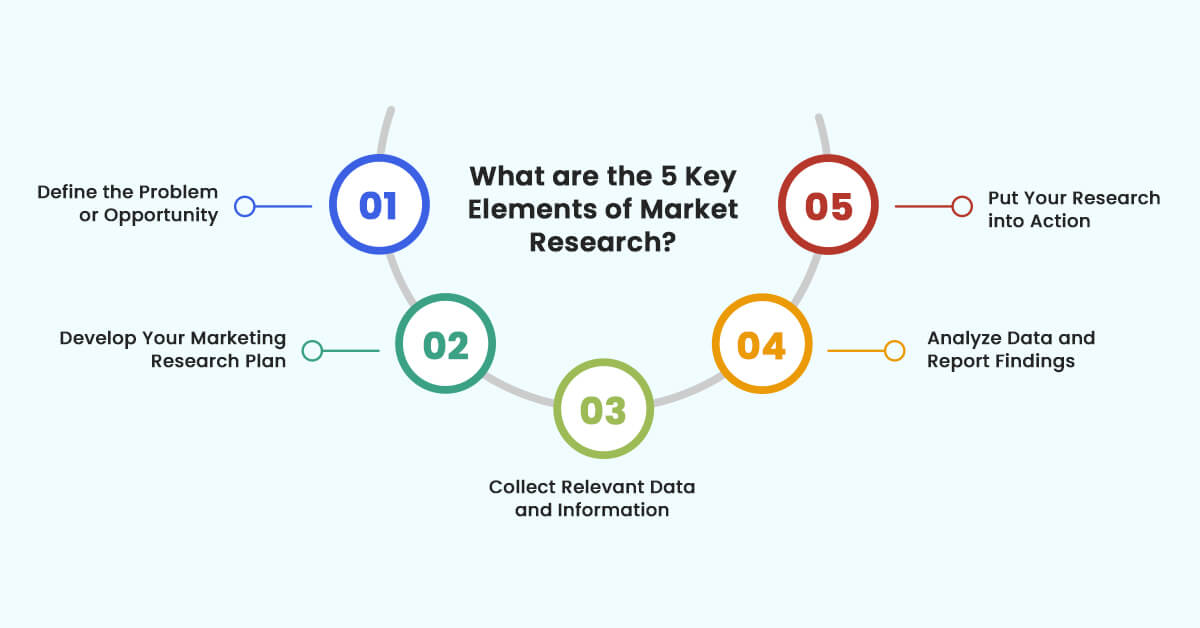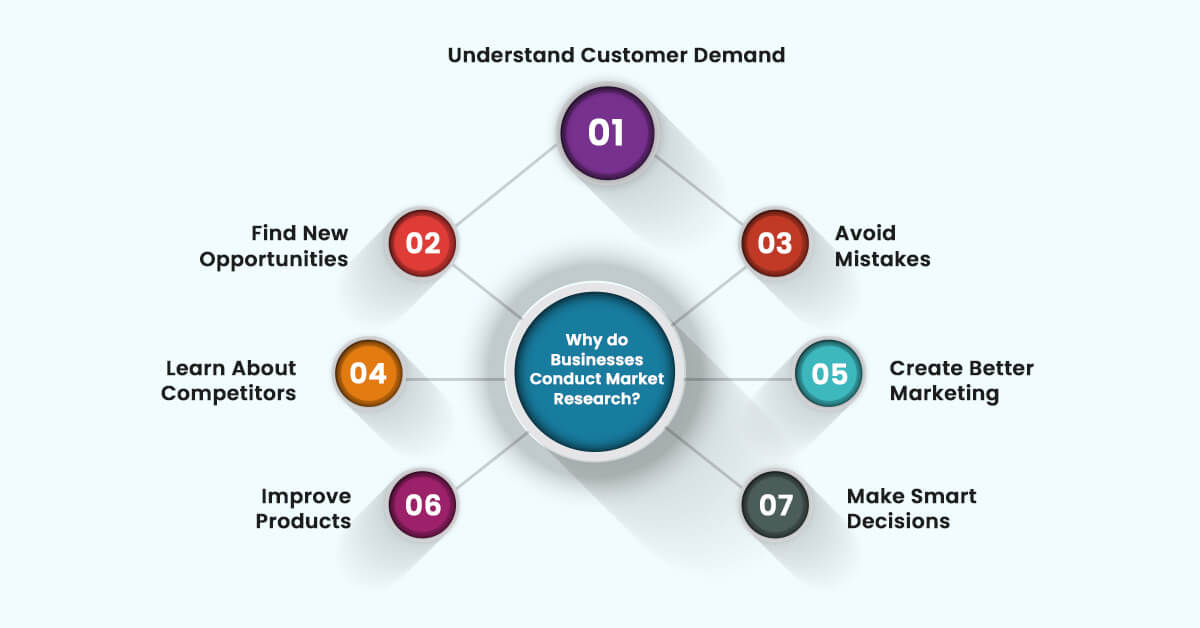
Market research is a critical function that helps in reducing risks at every level of doing business as you plan. It also provides a way to get both quantitative and qualitative data, and when you launch your product, you are in a position to make good decisions that meet the needs of your customers. This process assists in evaluating the possibility of a new product or service line. Market research can help a business identify its potential clients and collect information about their desire to engage with the company. Studying and analyzing the market can be done in-house or by hiring the service of specialized marketing firms including Web Screen Scraping.
The major area and field of concern is to accurately identify the need to be addressed or, in other words, to define the business need. It must be clear what type of information you seek before you can get any data. This could be understanding why you are increasingly losing your market share or how best to initiate the release of a new product into the market. It is recommended to start with specific questions to define the scope of the target audience and the impact of factors that concern the situation.
What are the 5 Key Elements of Market Research?

Market research involves gathering information concerning the target market, the competition, and the general environment. It is crucial because it informs customers about their needs, wants, trends, and market size.
Define the Problem or Opportunity
The first and most crucial step is clearly defining the problem you want to solve or the opportunity you wish to explore. Before gathering data, you must know precisely what you're trying to learn. This could be figuring out why your market share is dropping or how to launch a new product successfully. Start by asking specific questions to identify your target market and the key factors affecting your situation. For example, you might ask, "Who is our ideal customer?" or "What are the biggest challenges our target audience faces?"
Develop Your Marketing Research Plan
Once you've defined the problem or opportunity, it's time to create a research plan. This plan outlines how you will gather the information you need. There are various methods, such as interviews, surveys, and user tests. For instance, you might interview potential customers, conduct online surveys, or run tests on your website to see how users respond to different features. It's also helpful to look at existing studies or research to see if someone has already tackled a similar issue, which can save you time.
Collect Relevant Data and Information
Now, you start collecting data. Most data will be quantitative (numbers and statistics), but qualitative data (descriptions and observations) is also essential. For example, you might run an A/B test on your website to see which pricing tier attracts more customers while interviewing a few customers for their opinions. It's crucial to ensure the data you collect is valid and unbiased. Ask clear, open-ended questions to get honest responses.
Analyze Data and Report Findings
After gathering the data, it's time to analyze it. Look for trends rather than focusing on isolated pieces of information. As you analyze, don't try to fit the data into your preconceived ideas—let the data speak for itself. Sometimes, it's helpful to write a summary of your findings, including what you learned and what actions you recommend based on the results. This step is all about turning data into actionable insights.
Put Your Research into Action
With your research complete, it's time to take action. Use your findings to develop marketing strategies and campaigns. Market research is ongoing because the business environment and consumer behavior constantly change. Regularly revisit and analyze your data to keep your plan up-to-date. The more you know about your customers, industry, and business, the better your decisions and marketing efforts will be.
Market Research Plan: A Step-by-Step Guide
The process begins when you define the problem or opportunity and then develop a research plan. It describes how you will get the needed information in this plan. This is because there are different ways of carrying out usability tests, such as interviews, questionnaires, and tests. For example, you can ask current and prospective customers or conduct polls and experiments on your facility's website to determine users' reactions to specific features.
Gather All the Information and Data
You build up data using modern tools and techniques as soon as possible. Most of the data that will be collected will be quantitative data that includes numbers and statistics, while others will be qualitative data that involves description and observations. For instance, you might launch an A/B test on your agency's website to test the effectiveness of a higher-priced option and then follow up with two or three customers to get their take. There is a need to ensure that the data collected is valid and does not incline towards any particular side.
Access the Data and Prepare the Report
We will now evaluate the collected data. When analyzing a large volume of data, determine the findings that match your expectations. Just let them suggest. Many times, it can be helpful to conclude from the results about what they were and what you could do as a result. This step involves gain processing, which converts the collected data into helpful information.
Give Your Research a Real-World Application
Now that you've done your research, you must process and implement it. You can use this knowledge to create or modify marketing strategies and campaigns. It is critical to understand that market research is continuous because the business environment and customers' behavior are dynamic. You can do the same with your strategies and plans; check your data regularly to ensure your strategies are still current. Any knowledge related to the customers, the industry, or the business will improve decisions and function in the marketing endeavor.
Why do Businesses Conduct Market Research?

Companies apply market research to analyze consumer behavior and available economics to improve their concepts and plans. It assists a company in market research, where consumers provide data about the firm's products or services.
Understand Customer Demand
Market analysis is similar to the process of creating solid relationships with clients. It is useful for businesses to fulfill their routine requirements and what they lack regarding products or services. This makes it easier for companies to provide what people are searching for in the market, which will help meet their needs.
Find New Opportunities
Market research helps businesses identify new opportunities within the market. This might involve looking for latent trends or finding new business opportunities. Companies can discuss these opportunities before others by being aware of what is happening in their field, thus maintaining their lead and being complementary.
Avoid Mistakes
By conducting market research, businesses can obtain important information that is helpful in making big decisions, such as developing a new product. This research also enables businesses to grasp some of the hazards and difficulties that are bound to be encountered. This way, businesses can avoid making wrong decisions, and their decisions will often be profit-making decisions.
Learn About Competitors
Market research also assists organizations in monitoring their competitors as they strive to secure their market share. Businesses can benefit from studying the activities of other companies, including their positive and negative experiences. This information enables them to look for ways to be unique in the market or offer something better and unique to their rivals.
Create Better Marketing
If companies are conversant with their clients, they will be in a position to formulate efficient marketing approaches. They discover what kind of advertising, promotions, or commercials touch their audience's buttons. With this knowledge, advertising personnel can develop marketing strategies that draw people's attention and build customer interest, making them a constant market for their products.
Improve Products
Some market research feedback is very persuasive and helpful in enhancing the products or services that firms offer to the market. This means that what a customer has to say, either about what they like or the contrary, can be used by those in business to effect change and meet the customer halfway. This continuous improvement process enables them to keep updating their products to meet customer expectations.
Make Smart Decisions
Market research gathers the necessary information and knowledge to enable business organizations to make the right decisions. Whether the decisions involve products, promotion, or market expansion, statistics help organizations make better decisions. This results in improvements and better performance in their operations, greatly improving their success.
Conclusion
Marketing research reshapes companies by granting an understanding of customers and their behaviors, needs, and wants. With the help of analyzing primary customer needs, web screen scraping makes it possible to create new goods and provide services that are valuable to consumers, which means that customers will be more loyal to corresponding organizations. Such a customer-oriented approach immensely supports the effective retention of current customers and the acquisition of new ones, which improves overall business performance. In the same way, market research makes it possible for a business to see what new trends and opportunities are arising in the marketplace and develop ways of beating other rivals since the market is ever-changing. Conducting market research also gives a business insight into its competitors, and it’s an essential component in the positioning of a given business in the market. It also helps the company to make better decisions, enhance products and services, and bring sustainable growth.

